During a casual conversation at a coffee shop, my friend asked me, hey, do you know about monasteries in India? I’ve heard they’re incredibly peaceful and beautiful.
I nodded enthusiastically, yes, I actually visited a monastery in India a few years ago. The monastery I visited was nestled in the foothills of the Himalayas.
Wow, that sounds amazing. I’ve always wanted to visit a monastery in India. Do you have any recommendations for a similar experience?
I smiled and shared some tips about the monastery I had visited, along with other potential destinations in India known for their spiritual and serene atmosphere.
Join us as we explore the timeless beauty and spiritual sanctuaries of ancient monasteries in India in 2024.
Table of Contents
ToggleWhat is a Monastery ?
India, a land of diverse cultures and ancient traditions, is adorned with a rich tapestry of ancient monasteries that echo the spiritual legacy of centuries past.
A monastery is a place where monks live, work, and worship together in a community dedicated to religious or spiritual practices.
Monasteries in India can be found in various religious traditions, including Buddhism, Christianity, Hinduism, and Jainism.
These institutions typically serve as centers for prayer, meditation, study, and contemplation, often following a specific set of rules or disciplines prescribed by their respective religious orders or traditions.
Monasteries in India provide hospitality to visitors, offer educational programs, engage in charitable activities, and preserve religious and cultural heritage through the maintenance of sacred texts, artifacts, and architectural treasures.
From the snow-capped peaks of the Himalayas to the verdant valleys of the south, India’s ancient monasteries beckon travelers on a journey of exploration and enlightenment in 2024.
List of ten renowned monasteries in India:
1. Hemis Monastery
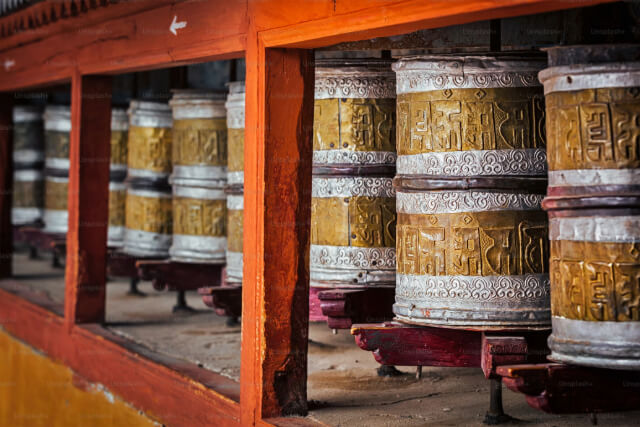
Located in the Ladakh region of Jammu and Kashmir, Hemis Monastery is one of the largest and wealthiest monasteries in India. It is famous for its annual Hemis Festival, which celebrates the birth anniversary of Guru Padmasambhava. Visitors can stay in this monastery in India during this festival.
Location: Hemis Monastery is nestled amidst the rugged landscapes of the Ladakh region, situated approximately 40 kilometers southeast of Leh, Perched at an altitude of over 3,500 meters above sea level.
Ideal Time for Pilgrimage: Hemis Monastery spans from the months of May to September. During this period, the region is accessible, allowing pilgrims and travelers to immerse themselves fully in the spiritual ambiance of this sacred site.
Cultural Immersion: Engage in the vibrant tapestry of Hemis Monastery’s daily rituals and traditions. Attend the monastery’s prayer ceremonies creating an atmosphere of profound serenity and devotion.
2. Tawang Monastery

Situated in the Tawang district of Arunachal Pradesh, Tawang Monastery is the largest monastery in India and the second-largest in the world. It is an important center of Tibetan Buddhism and offers stunning views of the surrounding Himalayan landscape
Location: Tawang Monastery is situated approximately 183 kilometers from Bomdila, ensconced at an altitude of 3500 meters above sea level.
Ideal Time for Pilgrimage: Envisioned against the backdrop of March to October, this period offers optimal weather conditions for a spiritually enriching experience amidst the tranquil environs of Tawang Monastery.
Cultural Immersion: Delve into the monastery’s daily rituals, partake in prayer ceremonies, and bask in the serenity of the surrounding Himalayan vistas, fostering a deeper connection with the spiritual essence of Tawang.
3. Rumtek Monastery

Also known as the Dharma Chakra Centre, Rumtek Monastery is located near Gangtok in Sikkim. It is the seat of the Karmapa Lama and is known for its beautiful architecture and sacred relics.
Location: Rumtek Monastery, situated 23 kilometers from Gangtok, Sikkim, at an altitude of 1500 meters, offers a serene retreat amidst the Himalayan foothills.
Ideal Time for Pilgrimage: March to October provides the best weather for a spiritually enriching visit to Rumtek Monastery.
Cultural Experience: Engage in daily rituals, prayer ceremonies, and immerse yourself in the monastery’s serene surroundings for a deeper spiritual connection
4. Namdroling Monastery
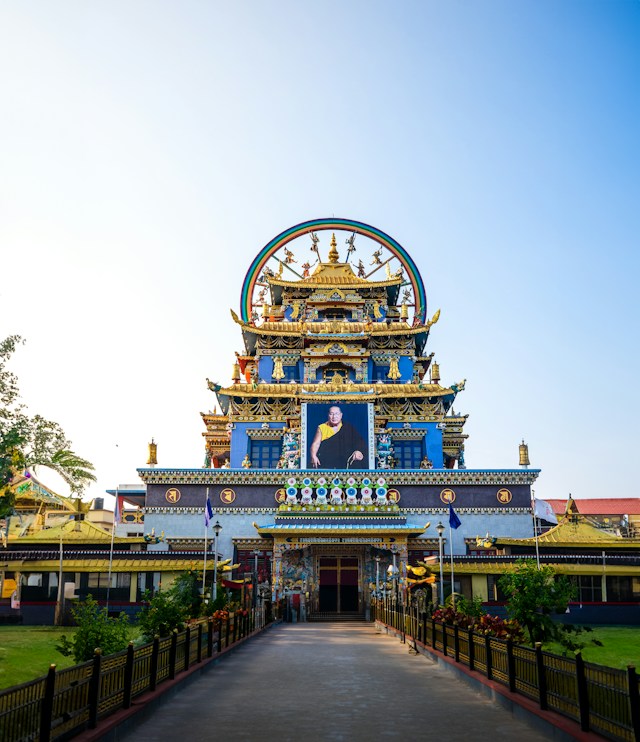
Situated in Bylakuppe near Mysore in Karnataka, Namdroling Monastery is the largest Tibetan Buddhist monastery in India. It is renowned for its stunning Golden Temple and intricate murals depicting Buddhist deities.
Location: Namdroling Monastery in Bylakuppe, Karnataka, offers a serene retreat amidst picturesque landscapes.
Ideal Time for Pilgrimage: March to October provides the best weather for a spiritually enriching visit to Namdroling Monastery.
Cultural Experience: Engage in daily rituals and explore vibrant Tibetan Buddhist culture for a deeper spiritual connection.
5. Diskit Monastery
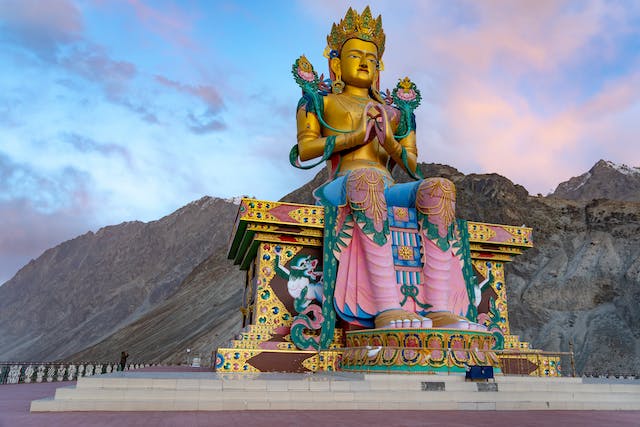
Located in the Nubra Valley of Ladakh, Diskit Monastery is one of the oldest and largest monasteries in the region. It offers panoramic views of the valley and houses a giant statue of Maitreya Buddha.
Location: Diskit Monastery is nestled in the Nubra Valley of Ladakh, offering stunning views amidst the rugged Himalayan terrain.
Ideal Time: The best time to visit Diskit Monastery is from May to September, when the weather is favorable for exploration.
Cultural Immersion: Immerse yourself in the monastery’s rituals and explore the rich Buddhist culture for a deeper spiritual experience.
6. Tabo Monastery
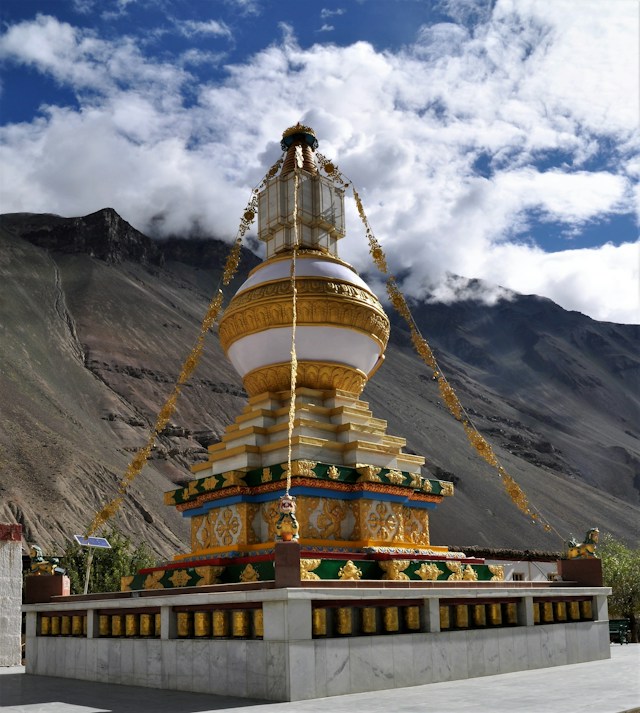
Situated in the Spiti Valley of Himachal Pradesh, Tabo Monastery is often referred to as the “Ajanta of the Himalayas” due to its ancient murals and paintings. It is one of the oldest functioning monasteries in India, dating back over a thousand years.
Location: Tabo Monastery is situated in the serene Spiti Valley of Himachal Pradesh, offering a peaceful sanctuary amidst the majestic Himalayas.
Ideal Time: The optimal time to visit Tabo Monastery is from June to September, when the weather is conducive to exploration and spiritual reflection.
Cultural Immersion: Engage in the monastery’s daily rituals and explore its ancient murals to experience the rich heritage of Tibetan Buddhism in the tranquil ambiance of Tabo Monastery.
7. Phuktal Monastery
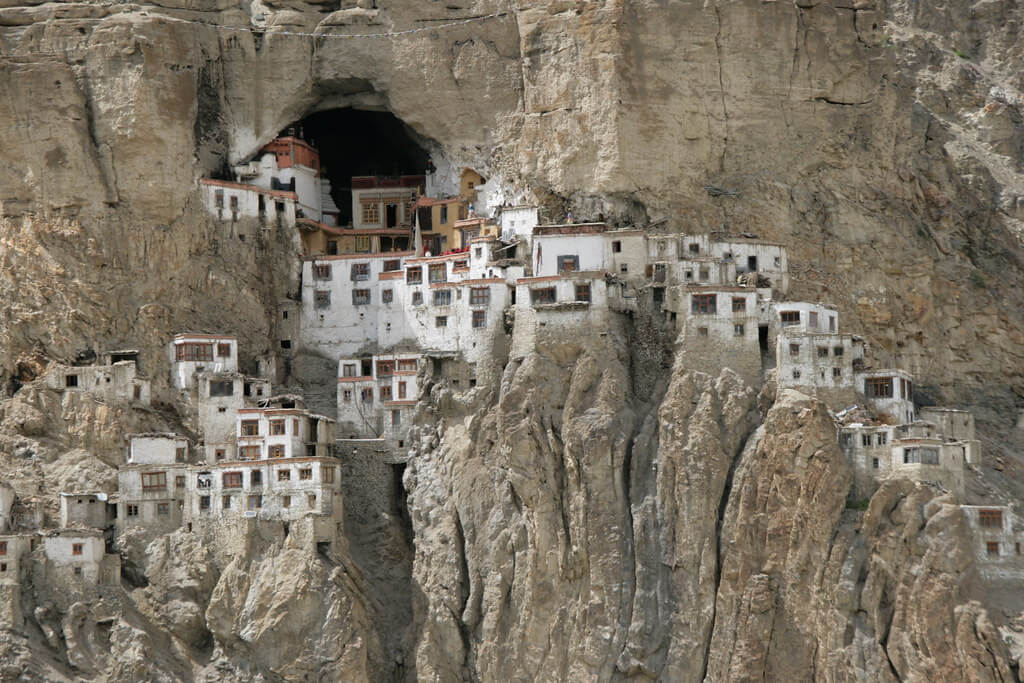
Perched on a cliffside in the Zanskar region of Ladakh, Phuktal Monastery is a remote and picturesque monastery accessible only by trekking. It is known for its unique cave-like structure and stunning location.
Location: Phuktal Monastery is perched on a cliffside in the remote Zanskar region of Ladakh, offering a breathtaking retreat amidst the rugged Himalayan landscape.
Ideal Time: The best time to visit Phuktal Monastery is from June to September, when the weather is favorable and the region is accessible for exploration.
Cultural Immersion: Immerse yourself in the monastery’s serene surroundings and partake in its daily rituals to experience the rich spiritual heritage of Tibetan Buddhism amidst the awe-inspiring beauty of Phuktal Monastery.
8. Ghoom Monastery
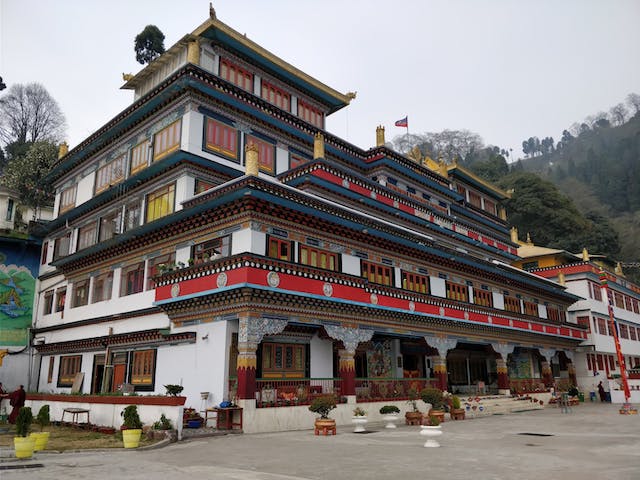
Located in Ghoom near Darjeeling in West Bengal, Ghoom Monastery is famous for housing a 15-foot tall statue of Maitreya Buddha, also known as the “Coming Buddha.” It offers panoramic views of the surrounding mountains.
Location: Ghoom Monastery is nestled in the quaint town of Ghoom, near Darjeeling in West Bengal, surrounded by the lush greenery of the Eastern Himalayas.
Ideal Time: The ideal time to visit Ghoom Monastery is from March to May and September to November when the weather is pleasant and conducive to exploration.
Cultural Immersion: Immerse yourself in the monastery’s daily rituals and explore its serene ambiance to experience the rich Buddhist culture and heritage amidst the tranquil surroundings of Ghoom Monastery.
9. Key Monastery
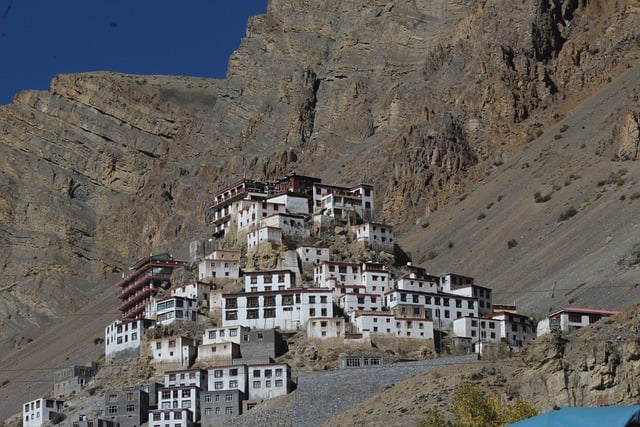
Situated at top of a hill in the Spiti Valley of Himachal Pradesh, Key Monastery is a Tibetan Buddhist monastery known for its picturesque location and ancient murals. It serves as a training center for Lamas and offers breathtaking views of the Spiti Valley.
Location: Key Monastery is situated atop a hill in the breathtaking Spiti Valley of Himachal Pradesh, offering panoramic views of the surrounding snow-capped peaks and rugged terrain.
Ideal Time: The best time to visit Key Monastery is from June to September, when the weather is mild and the roads are accessible for travelers.
Cultural Immersion: Engage in the monastery’s daily rituals, interact with the resident monks, and explore its ancient murals to delve deeper into the spiritual heritage of Tibetan Buddhism amidst the serene ambiance of Key Monastery.
10. Palpung Sherabling Monastery
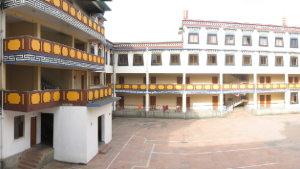
Located in the Kangra Valley of Himachal Pradesh, Palpung Sherabling Monastery is one of the largest monastic institutions in India. It is renowned for its serene atmosphere, lush surroundings, and traditional Tibetan architecture.
Location: Palpung Sherabling Monastery is nestled in the serene Kangra Valley of Himachal Pradesh, surrounded by lush greenery and majestic mountains.
Ideal Time: The optimal time to visit Palpung Sherabling Monastery is from April to June and September to November when the weather is pleasant and conducive to exploration.
Cultural Immersion: Immerse yourself in the monastery’s daily rituals, attend meditation sessions, and explore its serene surroundings to experience the rich spiritual heritage of Tibetan Buddhism amidst the tranquil ambiance of Palpung Sherabling Monastery.
Monasteries in India where you can stay
Several monasteries in India offer accommodation options for visitors seeking a unique and immersive experience. Here are some notable monasteries where you can stay:
1. Tawang Monastery (Arunachal Pradesh)
2. Rumtek Monastery (Sikkim)
3. Namdroling Monastery (Karnataka)
4. Diskit Monastery (Ladakh)
5. Tabo Monastery (Himachal Pradesh)
6. Key Monastery (Himachal Pradesh)
Ghoom Monastery (West Bengal)
These monasteries offer a unique opportunity to connect with India’s spiritual heritage and experience the peaceful lifestyle of monks and nuns.
Conclusion
These ten monasteries represent some of the most significant and breathtaking religious sites in India, each offering a unique glimpse into the country’s diverse spiritual heritage.
As travelers embark on a journey to explore India’s ancient monasteries in 2024, they are invited to discover the country’s rich heritage, architectural splendor, and spiritual significance.
By planning their visit thoughtfully and immersing themselves in the unique experiences offered by each monastery, travelers can forge unforgettable memories and deepen their understanding of India’s timeless spiritual traditions.
People also read : Best Taj Mahal Tour Packages for Every Budget!


